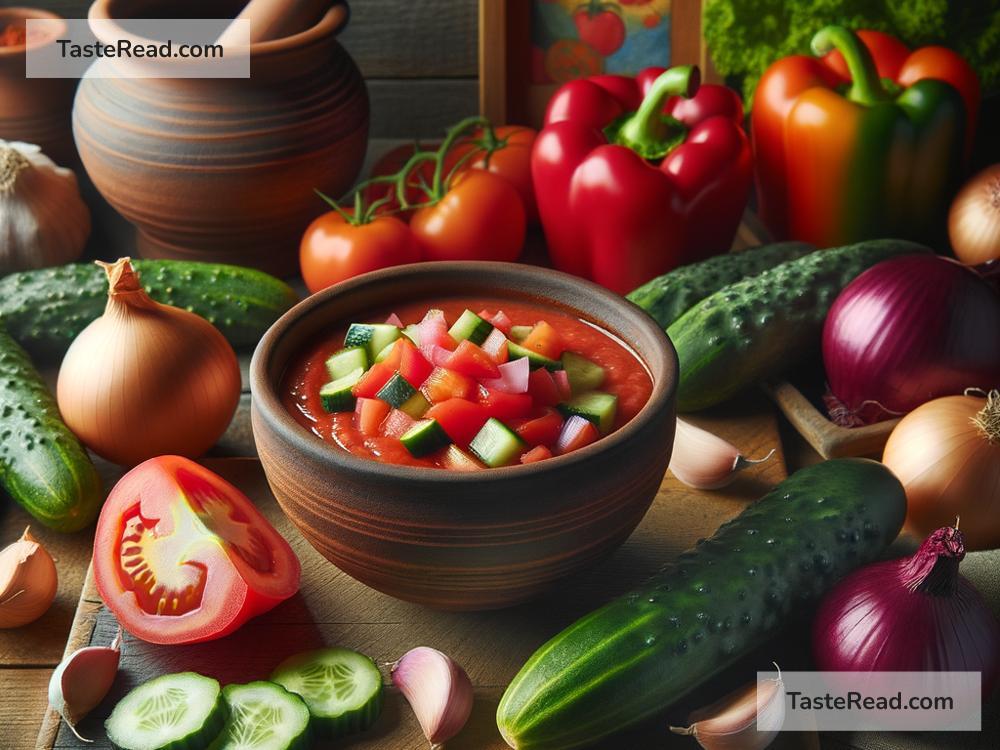The Development of Spanish Gazpacho: A Journey Through Time
Gazpacho is one of Spain’s most famous dishes. It’s a cold, refreshing soup made from fresh vegetables, and it’s loved by people all over the world. This dish is simple, yet it has a rich history that spans hundreds of years. In this blog, we’ll explore how gazpacho developed, where it came from, and why it remains so popular today.
What is Gazpacho?
Before diving into its history, let’s talk about what gazpacho is. Gazpacho is a cold soup primarily made from tomatoes, cucumbers, bell peppers, garlic, olive oil, vinegar, and bread. The ingredients are blended together into a smooth or slightly textured soup. It’s served chilled, which makes it perfect for hot summer days.
Gazpacho is loved for its freshness and simplicity. It provides a burst of flavor without being heavy, and it’s packed with vitamins and nutrients. It’s the perfect dish for Spain’s warm climate, where people often look for light and hydrating meals.
The Early Days of Gazpacho
Gazpacho has ancient roots that go back to the Middle Ages—or possibly even earlier. Some historians believe that gazpacho originated with the Moors, who ruled parts of Spain for hundreds of years. The Moors introduced many ingredients and cooking techniques to Spain, including the idea of mixing bread with water, olive oil, and vinegar to create a simple dish.
The earliest form of gazpacho didn’t include tomatoes. This is because tomatoes didn’t arrive in Europe until the 16th century, after they were brought over from the Americas by Spanish explorers. The original version of gazpacho was likely a humble peasant dish, made with stale bread, garlic, vinegar, olive oil, and water. It was simple, affordable, and nourishing—a perfect meal for hardworking farmers.
The Arrival of Tomatoes
Tomatoes changed gazpacho forever. When tomatoes arrived in Spain in the 16th century, they quickly became a key ingredient in many dishes, including gazpacho. The acidity and vibrant red color of tomatoes gave gazpacho a fresh, new taste and appearance.
With the addition of tomatoes, gazpacho became even more popular, especially in the southern region of Andalusia. Andalusia has a hot climate, and gazpacho provided locals with a cooling meal that required no cooking. It became a symbol of summer and a source of pride for Andalusian cuisine.
Regional Variations
Over time, gazpacho began to evolve. Different regions in Spain created their own versions of the dish by adding local ingredients or tweaking the recipe. For example:
– Salmorejo: In Córdoba, a thicker version of gazpacho called salmorejo became popular. It contains more bread and less water, making it creamy and dense. Salmorejo is often topped with hard-boiled eggs and cured ham.
– Ajo Blanco: In Málaga and Granada, there’s another variation of gazpacho that doesn’t use tomatoes at all. Known as ajo blanco, this version is made with almonds, garlic, bread, and olive oil. It’s white in color and has a nutty, rich flavor.
These variations highlight the creativity and diversity of Spanish cuisine. No matter where you go in Spain, you’ll find people putting their unique twist on the traditional recipe.
Gazpacho Today
While gazpacho has deep roots in tradition, it hasn’t remained stuck in the past. Today, chefs and home cooks experiment with the dish by adding unusual ingredients, such as watermelon, strawberries, avocado, or even seafood. Modern gazpachos are often served in restaurants as elegant starters, showcasing the versatility of this beloved soup.
Despite these innovations, the classic tomato-based gazpacho remains incredibly popular. In Spain, it’s often sold ready-made in supermarkets, making it easy for people to enjoy all year round. Outside Spain, the dish has become a favorite in countries with warm climates, especially during the summer months. Many people associate gazpacho with healthy eating, as it’s full of fresh produce and free from processed ingredients.
Why Gazpacho Endures
So, why has gazpacho remained popular for so long? The answer lies in its adaptability and its connection to Spanish culture. First, gazpacho is incredibly versatile—it can be made with simple ingredients, adjusted to suit personal tastes, and served at casual family meals or fancy dinners. It’s a dish that belongs to everyone, from peasants to royalty.
Second, gazpacho reflects the spirit of Spain itself. It’s vibrant, fresh, and full of flavor, just like the country’s landscape and climate. It’s a reminder of Spain’s agricultural heritage, where fresh produce and olive oil play central roles in the cuisine. Gazpacho isn’t just a food—it’s a cultural symbol that connects Spaniards to their past.
Conclusion
Gazpacho has come a long way from its humble beginnings as a bread-based meal for farmers. Over the centuries, it has evolved into an iconic Spanish dish that’s celebrated around the world. Whether you enjoy it in its classic tomato form or try a modern twist, gazpacho is a delicious reminder of Spain’s rich culinary history.
So next time you take a sip of this cold, refreshing soup, think about the journey it has taken—from the fields of Andalusia to your table today. Gazpacho is much more than a dish; it’s a story of resilience, creativity, and culture—told through the flavors of Spain.


